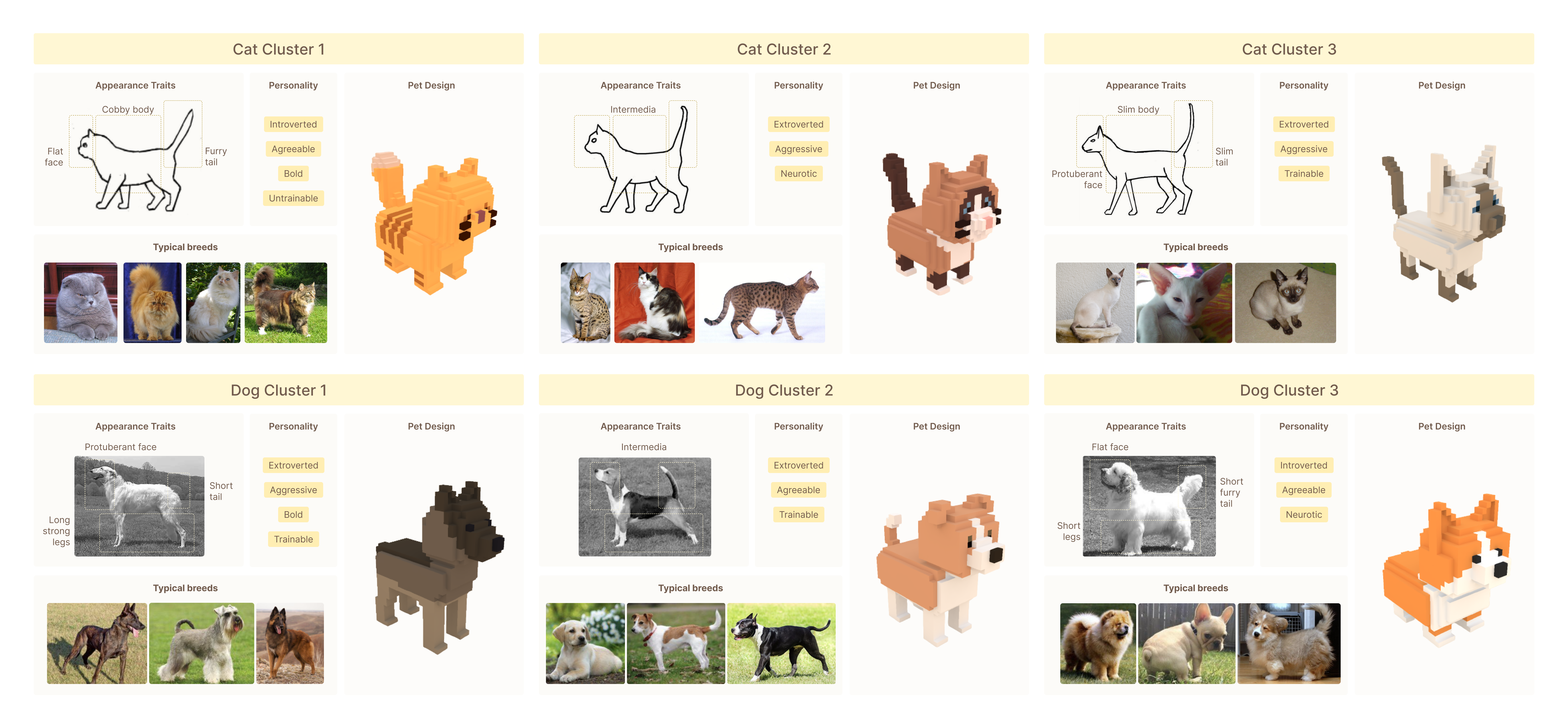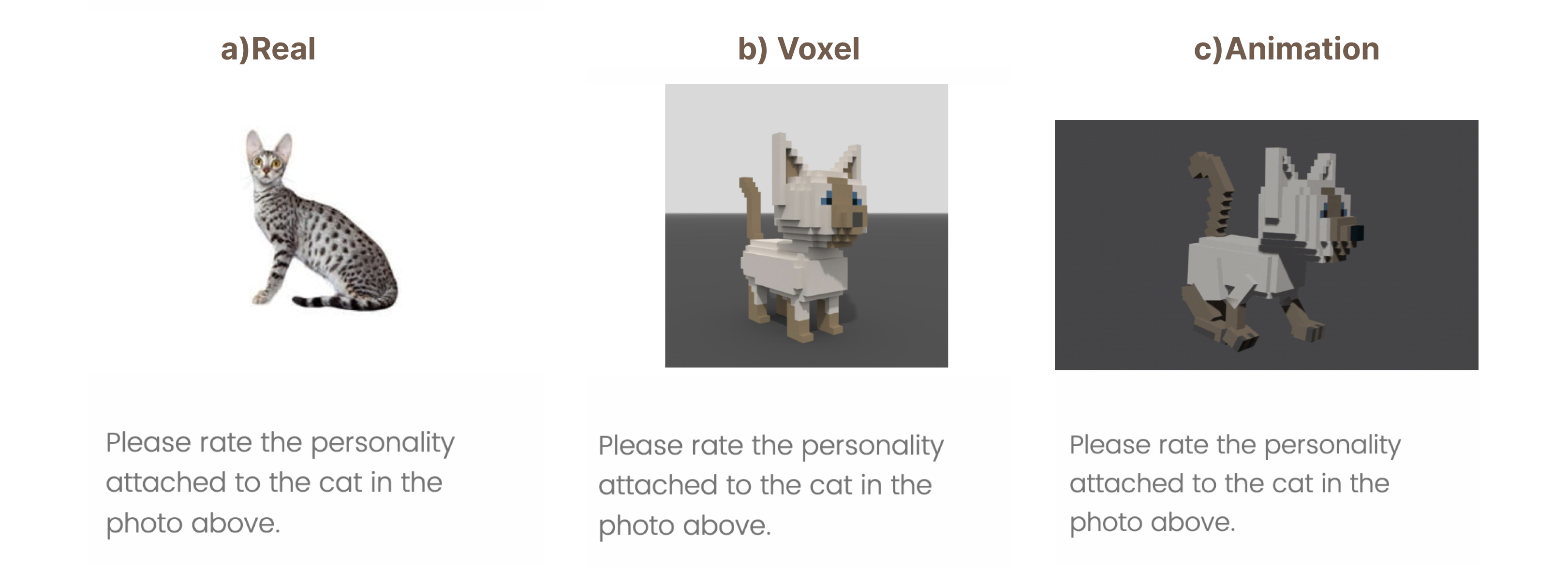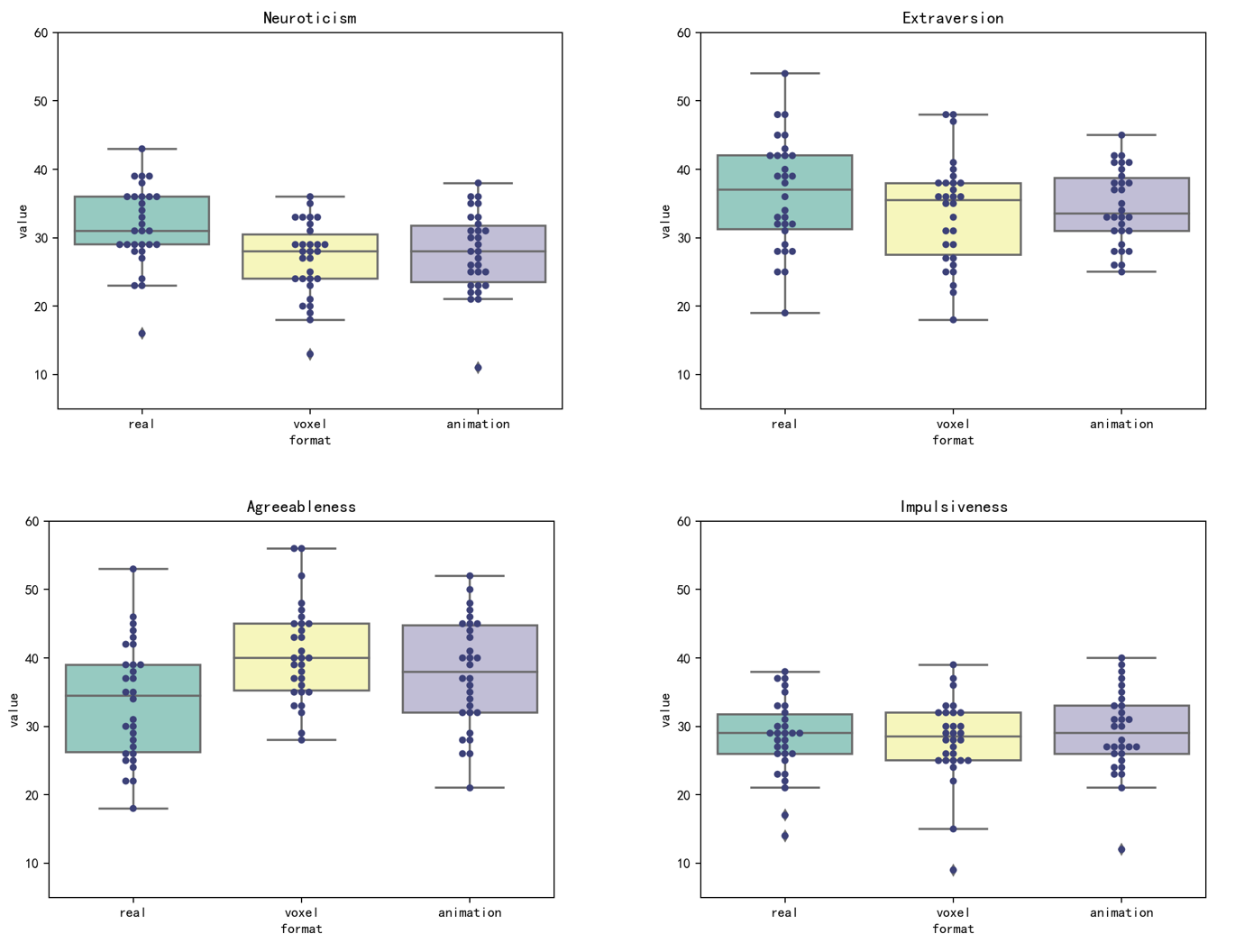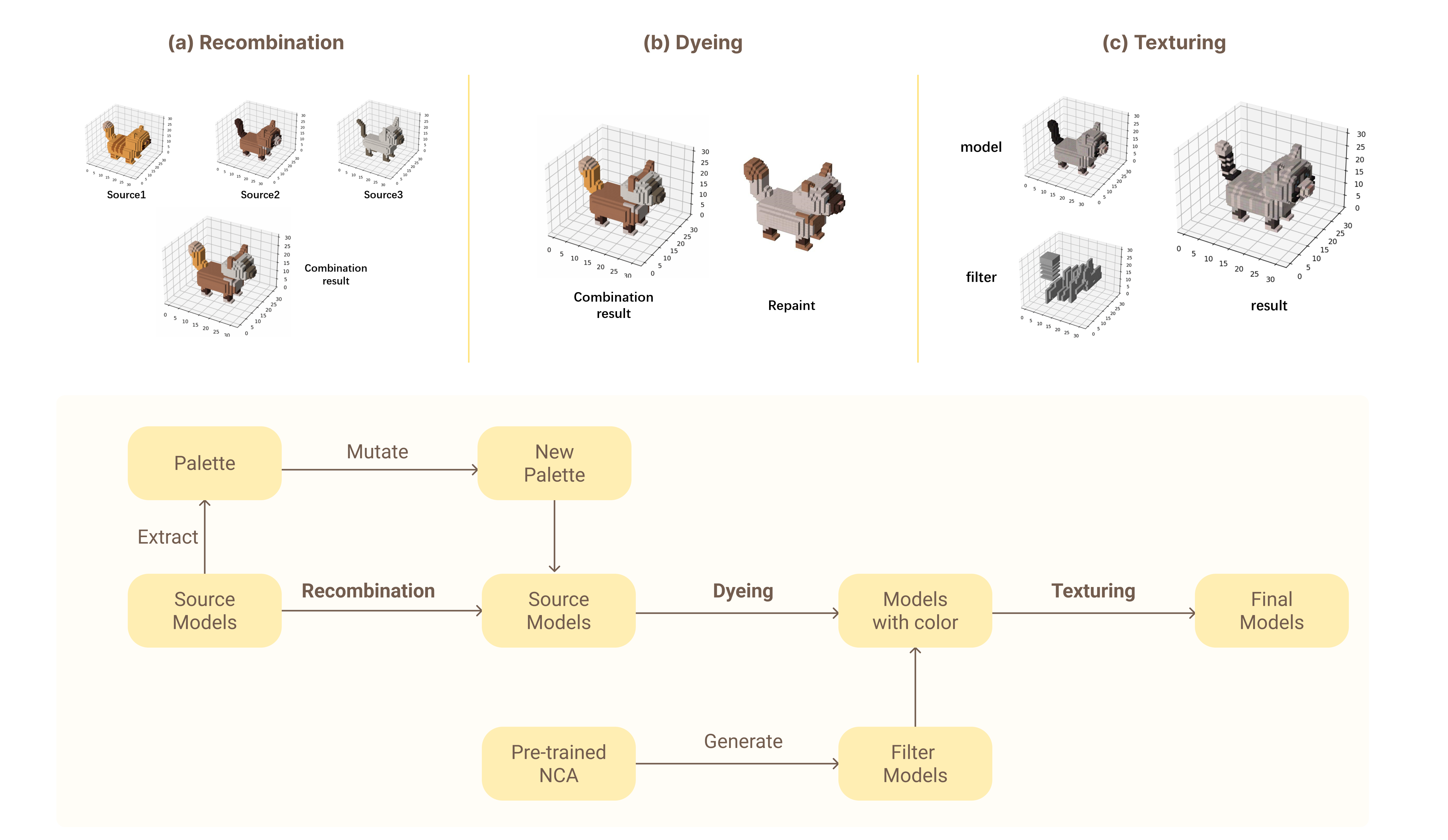The statistical results showed that appearance features played a significant role in participants' likability ratings of virtual pets,
specifically cobby cats with light-colored coats and decorations.
Additionally, we identified significant correlations between certain personality and player-type traits and likability ratings of virtual pets.
The qualitative results show a strong correlation between virtual pets' physical features and personalities attributed by users.
Appearance plays a significant role in conveying their personalities, as participants identified specific personality traits based on design elements like body shape, skin color, facial features, and expressions.
Additionally, users' personalities can influence their preferred pet personalities, explaining why some prefer pets with corresponding personalities.
Most participants found the voxel-style pets more relaxing and easier to create with intricate details than the realistic-style pets. Overall, appearance significantly shapes users' perceptions of virtual pets, and their preferences are related to the emotions evoked by the pet styles.








